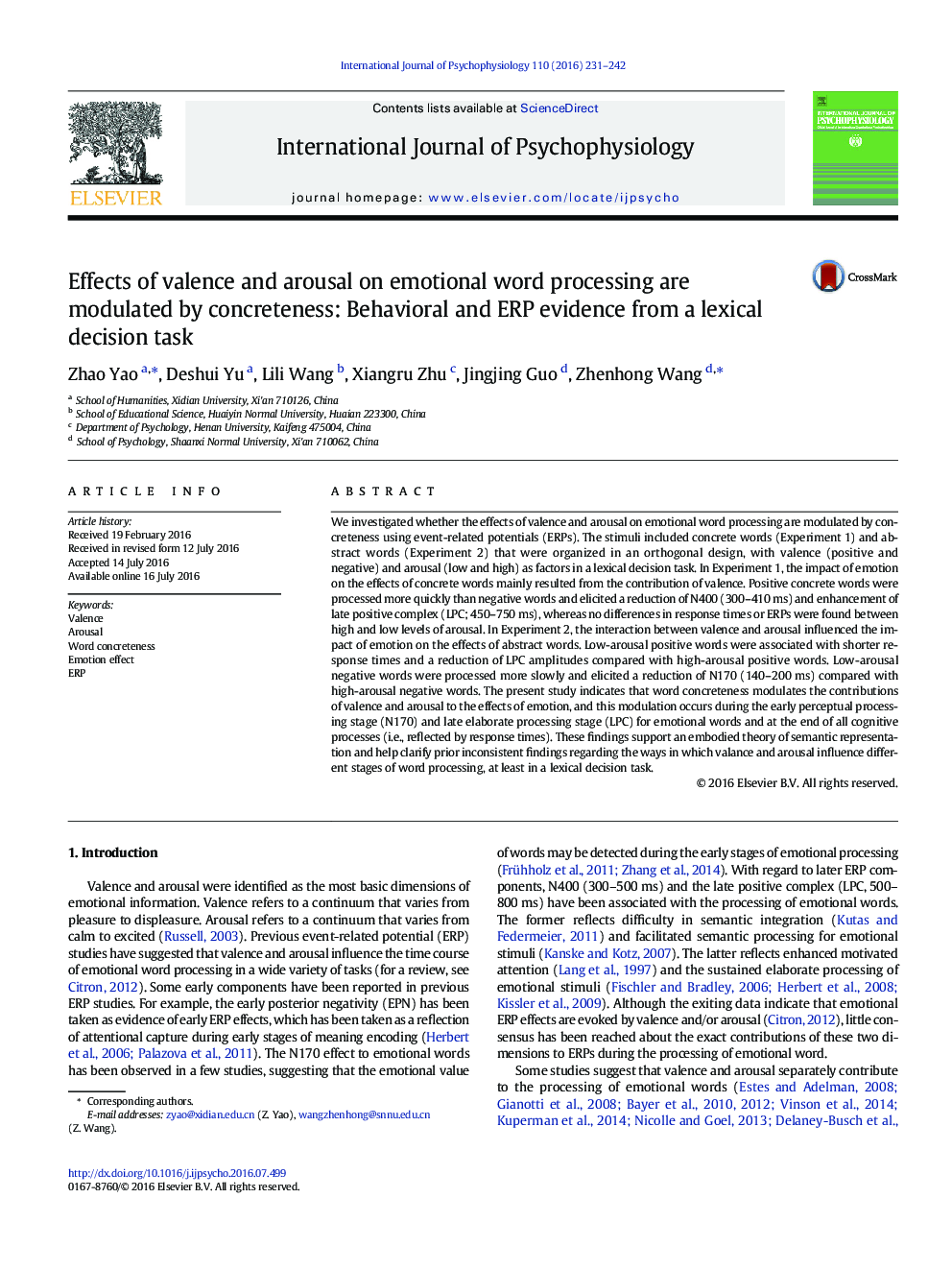| Article ID | Journal | Published Year | Pages | File Type |
|---|---|---|---|---|
| 5042403 | International Journal of Psychophysiology | 2016 | 12 Pages |
â¢Concreteness modulates the contribution of valence and arousal to emotion effects.â¢This modulation mainly occurs in the early and late time-windows.â¢Emotion effects of concrete words mainly result from the contribution of valence.â¢Valence and arousal interactively contribute to emotion effects of abstract words.â¢Future studies of emotional words should consider the role of concreteness.
We investigated whether the effects of valence and arousal on emotional word processing are modulated by concreteness using event-related potentials (ERPs). The stimuli included concrete words (Experiment 1) and abstract words (Experiment 2) that were organized in an orthogonal design, with valence (positive and negative) and arousal (low and high) as factors in a lexical decision task. In Experiment 1, the impact of emotion on the effects of concrete words mainly resulted from the contribution of valence. Positive concrete words were processed more quickly than negative words and elicited a reduction of N400 (300-410Â ms) and enhancement of late positive complex (LPC; 450-750Â ms), whereas no differences in response times or ERPs were found between high and low levels of arousal. In Experiment 2, the interaction between valence and arousal influenced the impact of emotion on the effects of abstract words. Low-arousal positive words were associated with shorter response times and a reduction of LPC amplitudes compared with high-arousal positive words. Low-arousal negative words were processed more slowly and elicited a reduction of N170 (140-200Â ms) compared with high-arousal negative words. The present study indicates that word concreteness modulates the contributions of valence and arousal to the effects of emotion, and this modulation occurs during the early perceptual processing stage (N170) and late elaborate processing stage (LPC) for emotional words and at the end of all cognitive processes (i.e., reflected by response times). These findings support an embodied theory of semantic representation and help clarify prior inconsistent findings regarding the ways in which valance and arousal influence different stages of word processing, at least in a lexical decision task.
